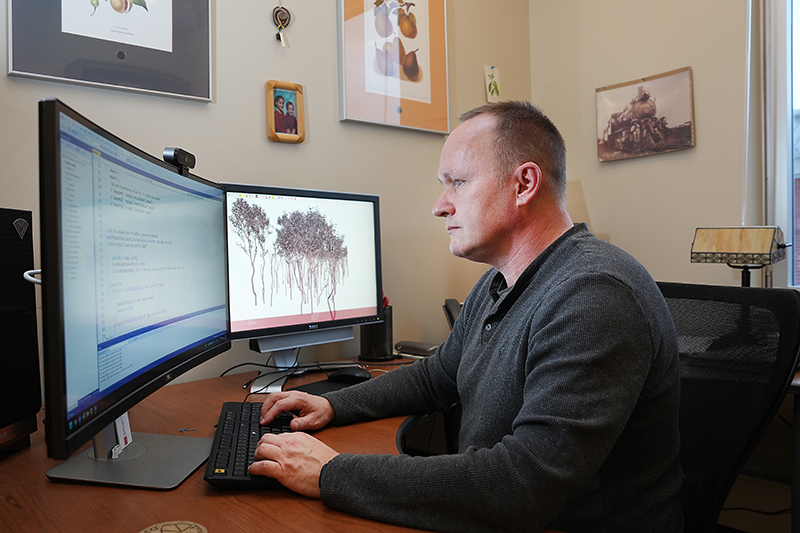Bedrich Benes, an esteemed professor of computer science and a distinguished member of the Institute for Digital Forestry at Purdue University, is pioneering a revolutionary application of deep learning inspired by DNA to tackle a longstanding issue in computer graphics.
In collaboration with Sören Pirk from Kiel University in Germany, the research team has leveraged artificial intelligence to simulate tree growth and morphology. Drawing insights from the intricate genetic coding governing tree structure and responses to the environment, Bedrich Benes and his cohorts have devised innovative AI models capable of condensing essential tree-form information into a concise neural framework.
Through rigorous training, these AI models can depict the localized evolution of trees, facilitating the creation of intricate and detailed tree models that encompass vast amounts of geometric data. This breakthrough represents a significant departure from conventional non-AI-based digital tree models, which rely on intricate simulation algorithms considering diverse nonlinear elements.
Published in prestigious journals such as ACM Transactions on Graphics and IEEE Transactions on Visualizations and Computer Graphics, the research articles authored by Benes and his team delve into the development of these state-of-the-art tree-simulation AI models. By harnessing extensive datasets, the AI models learn to emulate the inherent behaviors observed in tree growth, opening avenues for more lifelike and captivating designs in architecture, urban planning, gaming, and entertainment sectors.
With nearly a decade dedicated to refining AI models, Benes foresaw substantial enhancements in digital tree modeling methodologies. The remarkable aspect lies in the compact nature of these models, encapsulating intricate tree behaviors within a relatively modest dataset. This breakthrough has the potential to transform the creation of 3D vegetation models, a persistent challenge in the realm of computer graphics.
Employing deep learning methodologies, the research team has adeptly crafted growth models for diverse tree species, ranging from maple and oak to pine and walnut, with variations including leafed and leafless renditions. By training AI models using neural networks inspired by the human brain, they have unlocked novel possibilities in replicating natural phenomena through artificial intelligence.
While AI has made significant progress in modeling 3D geometries unrelated to the natural world, generating 3D models of authentic trees has posed a formidable obstacle in computer graphics. By enabling AI to glean the essence of tree morphology from expansive datasets, the researchers aim to bridge the disparity between intrinsic tree characteristics and environmental influences.
Looking to the future, Benes envisions a landscape where AI can reconstruct 3D geometric data from real trees captured via simple photographs, aligning with the ethos of digital forestry. This pioneering approach holds the potential to reshape the field of computer graphics and deepen our comprehension of natural processes.
The Department of Computer Science at Purdue University stands at the forefront of propelling these innovative endeavors as part of the Purdue Computes initiative.










